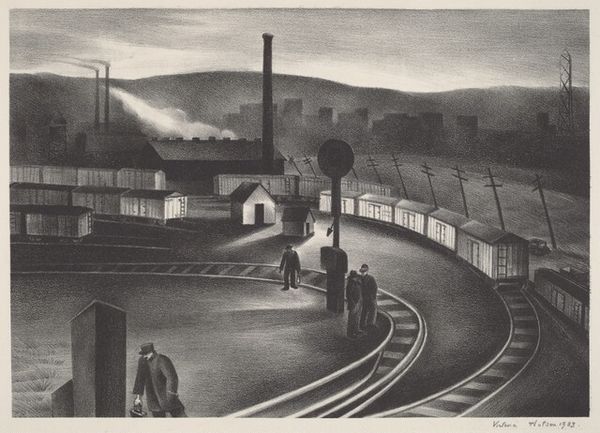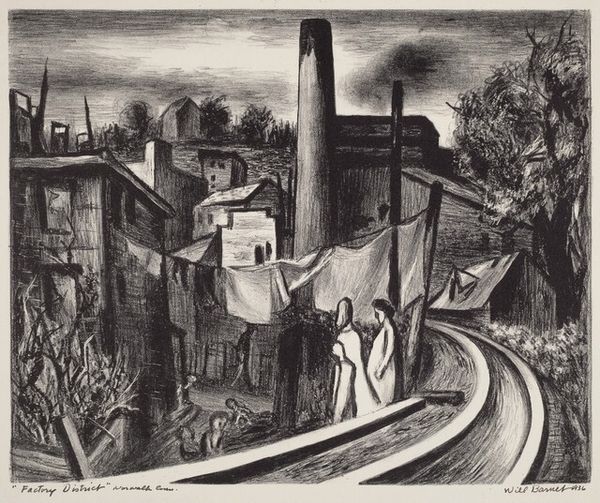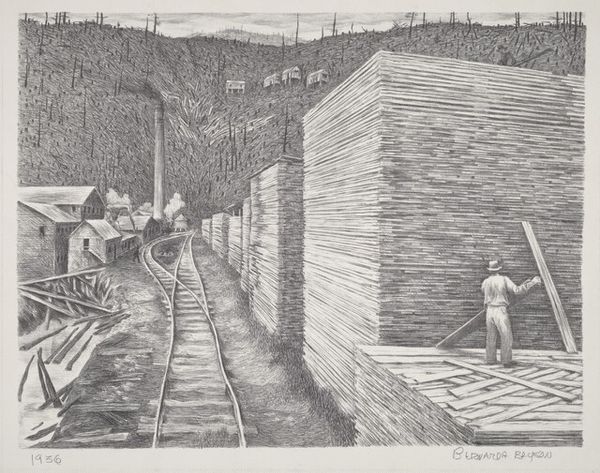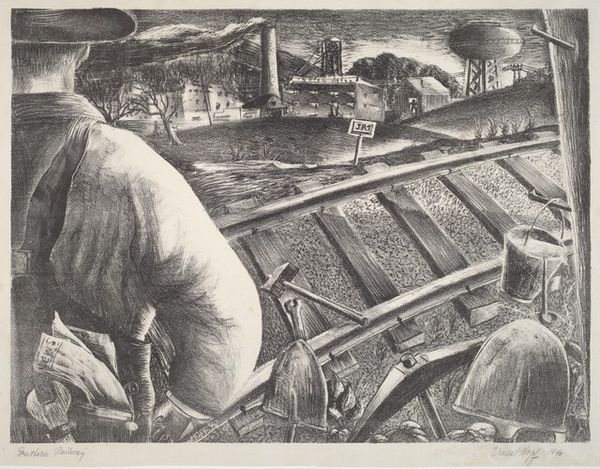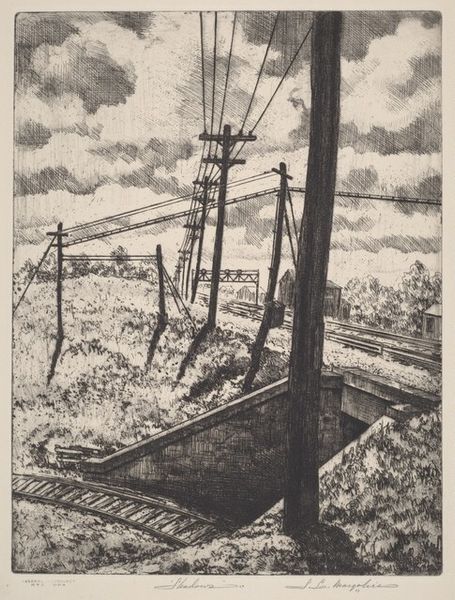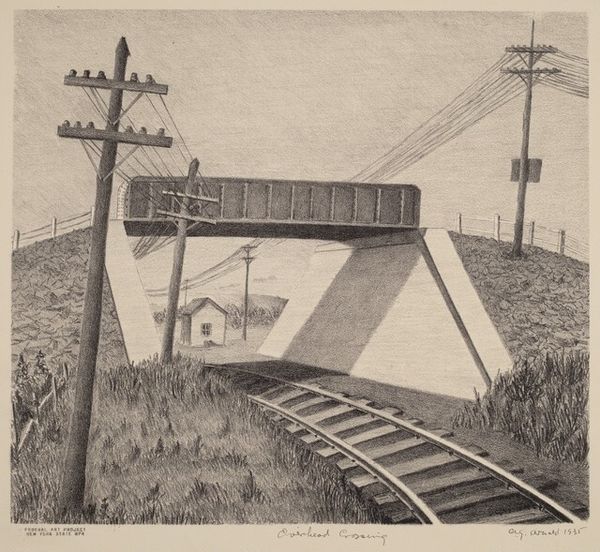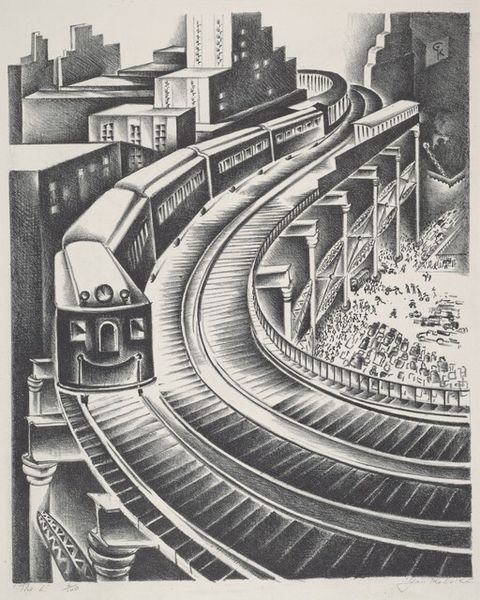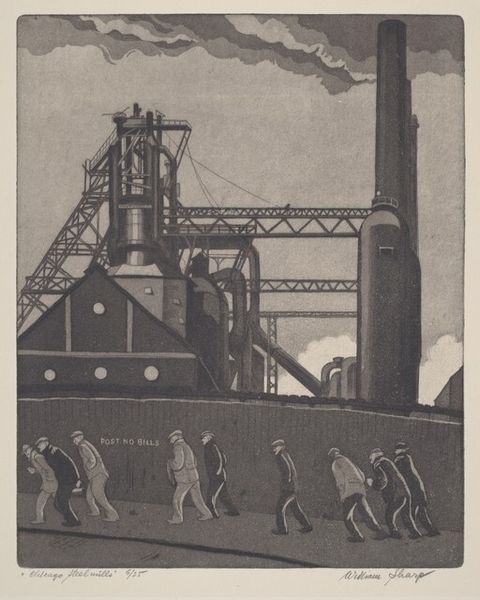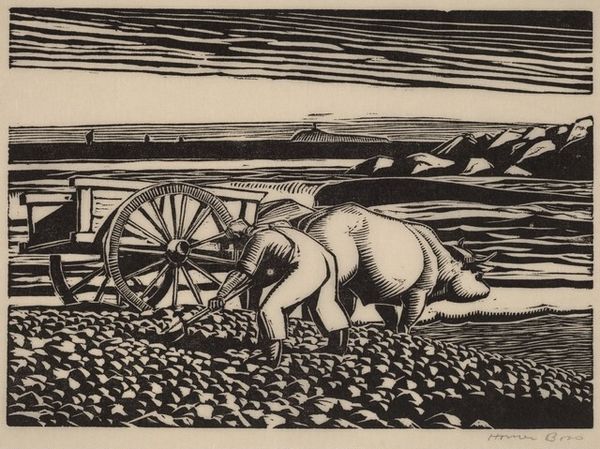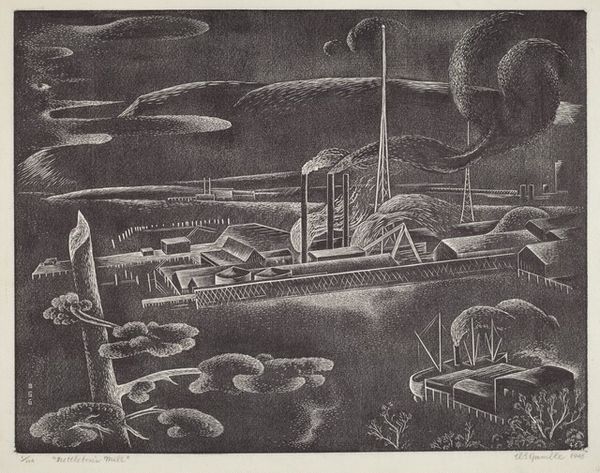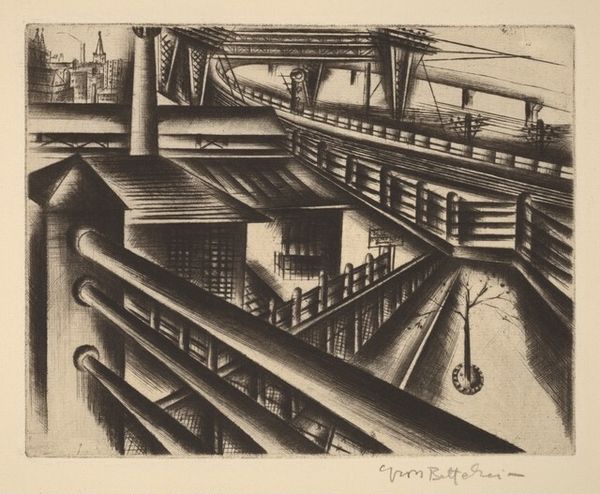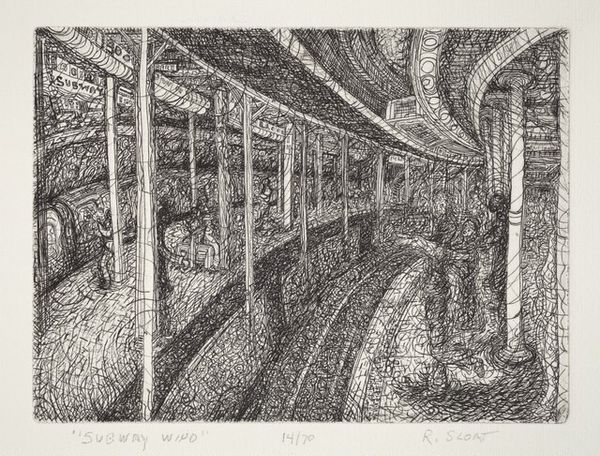
drawing, print, graphite
#
drawing
# print
#
landscape
#
social-realism
#
pencil drawing
#
graphite
#
genre-painting
#
realism
Dimensions: image: 245 x 326 mm sheet: 304 x 402 mm
Copyright: National Gallery of Art: CC0 1.0
Curator: Here we have Aaron Pyle's "Working on the Union-Pacific," a graphite drawing from sometime between 1935 and 1940. First impressions? Editor: There’s such stoic labor conveyed by this composition. The subdued tonality evokes a sense of perseverance and the grit of honest work. It reminds me of a visual ballad of American endeavor. Curator: Yes, it’s absolutely soaked in Social Realism, isn't it? A snapshot of everyday life elevated, the Union Pacific itself becoming a kind of stage. Editor: Definitely. Railroads have always been powerful symbols: connection, progress, and also, ironically, sometimes displacement and societal divides. This image seems to embody both the building up and the sacrifice implicit in progress. Curator: The interesting thing to me is the tension between the individual figures, toiling, seemingly isolated, and the broader endeavor they’re part of. Like the nation building itself on their collective, mostly anonymous work. There's an unsentimental honesty in the landscape that seems to resonate with the struggles of the period. Editor: Look at the vertical lines - the telegraph poles repeating off into the distance – juxtaposed with the hard diagonal of the rail lines. It visually drives home this convergence of individual efforts into a single trajectory, mirroring the promise of progress but almost crushing the laborers under the weight. It feels somber to me. Curator: Indeed, and that’s likely intentional. What I take away from it is an almost elegiac contemplation, on an America working itself out of a deep crisis. Editor: A fitting interpretation. These railroads represented the physical embodiment of hope but for so many it meant a continued cycle of toil and hardship. The art serves as a visual memento to their contributions and sacrifice. Curator: I think this perspective captures its essence well: an era symbolized, and a very tactile glimpse into it—made of lines and tones but telling stories, almost whispering, of nation-building and human resilience.
Comments
No comments
Be the first to comment and join the conversation on the ultimate creative platform.

